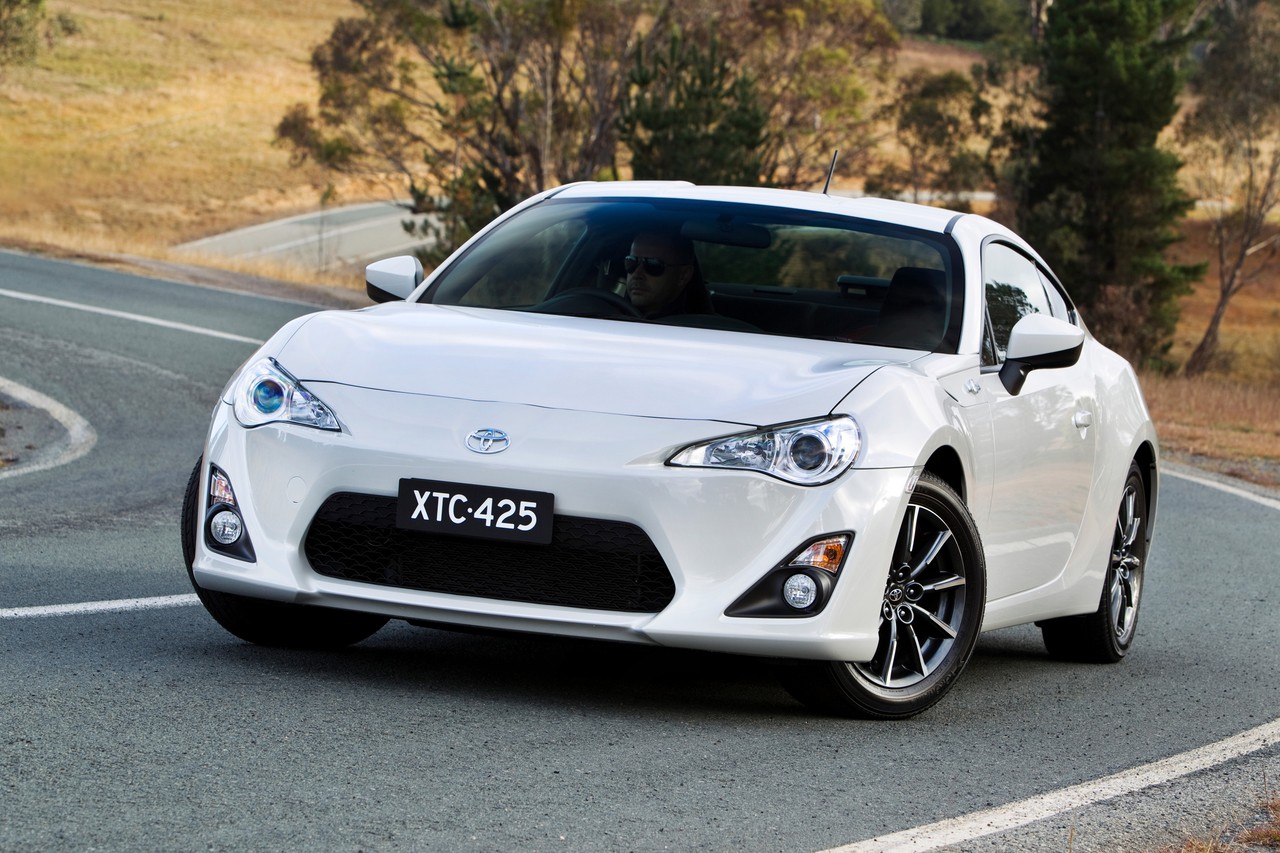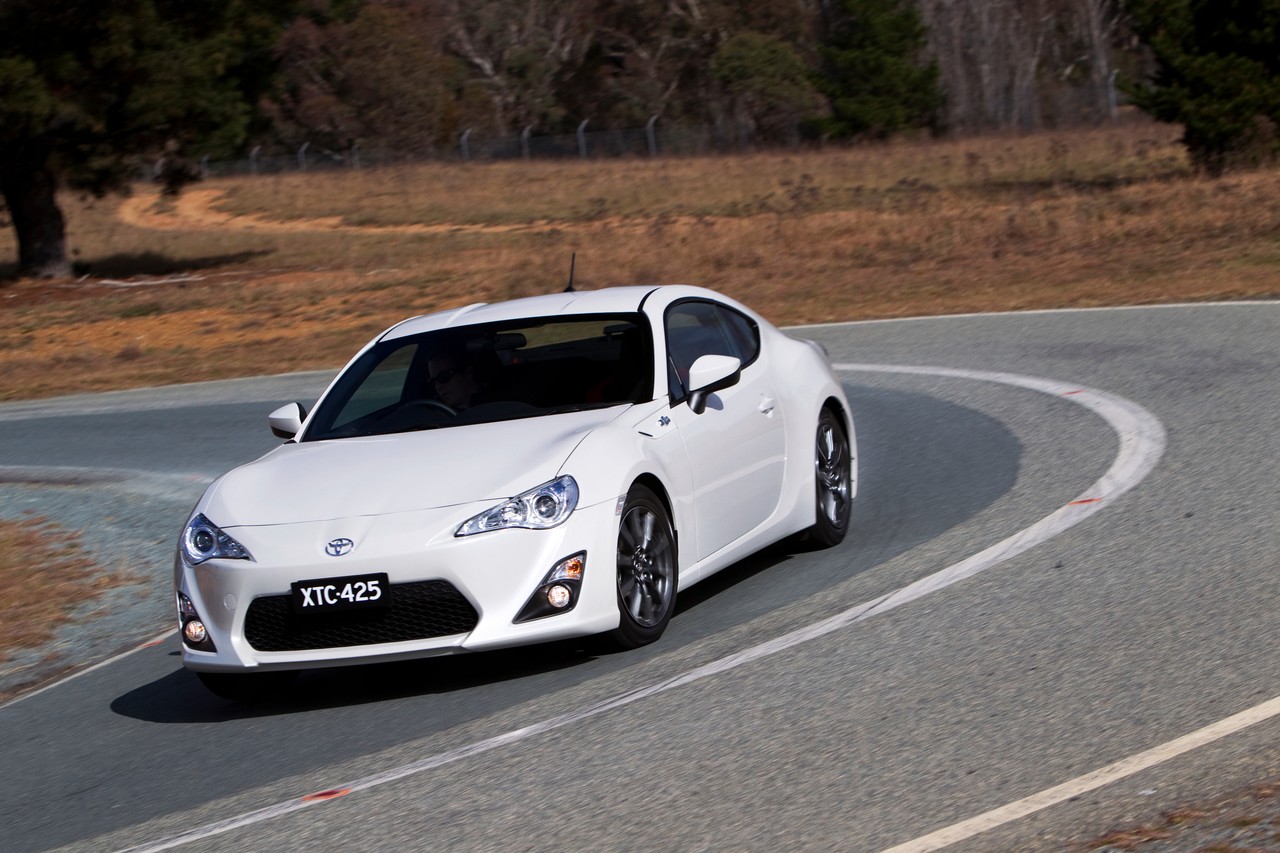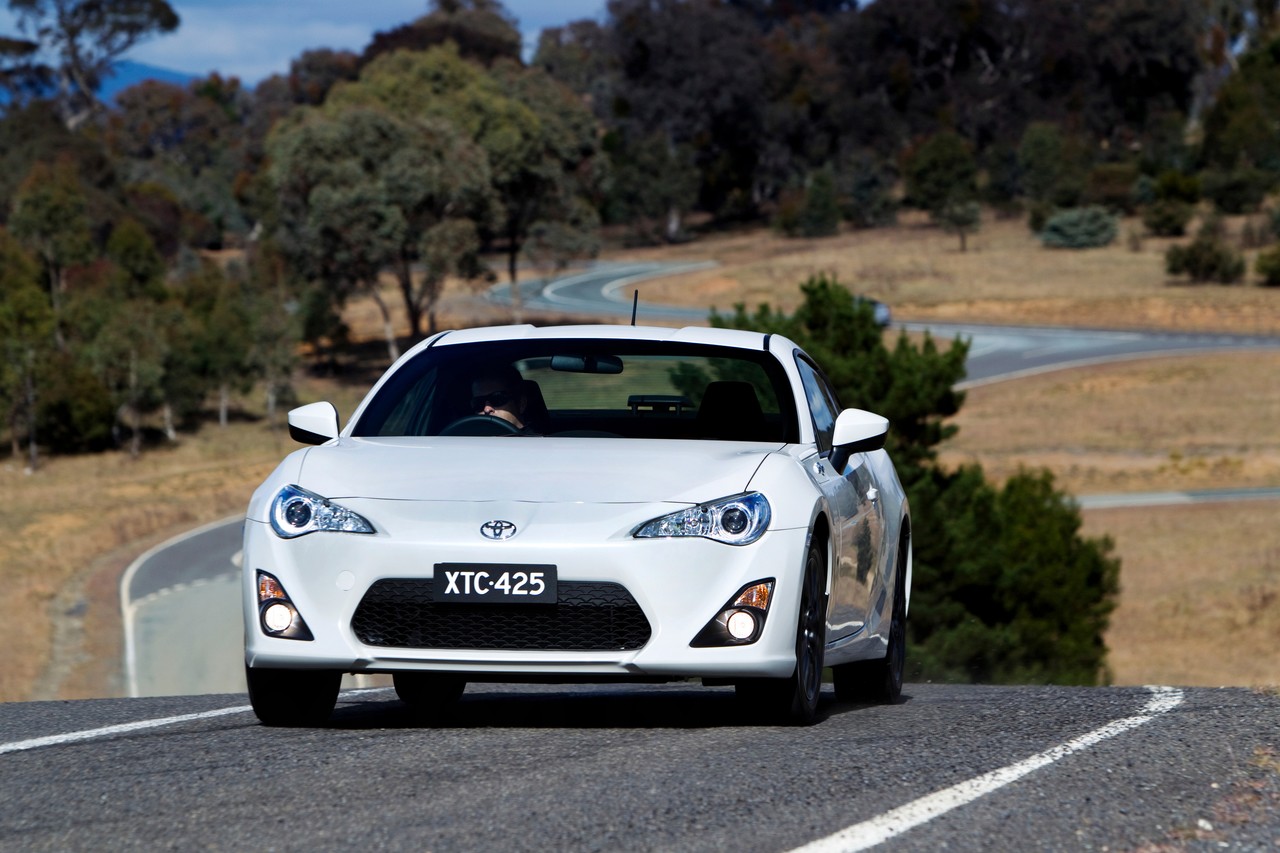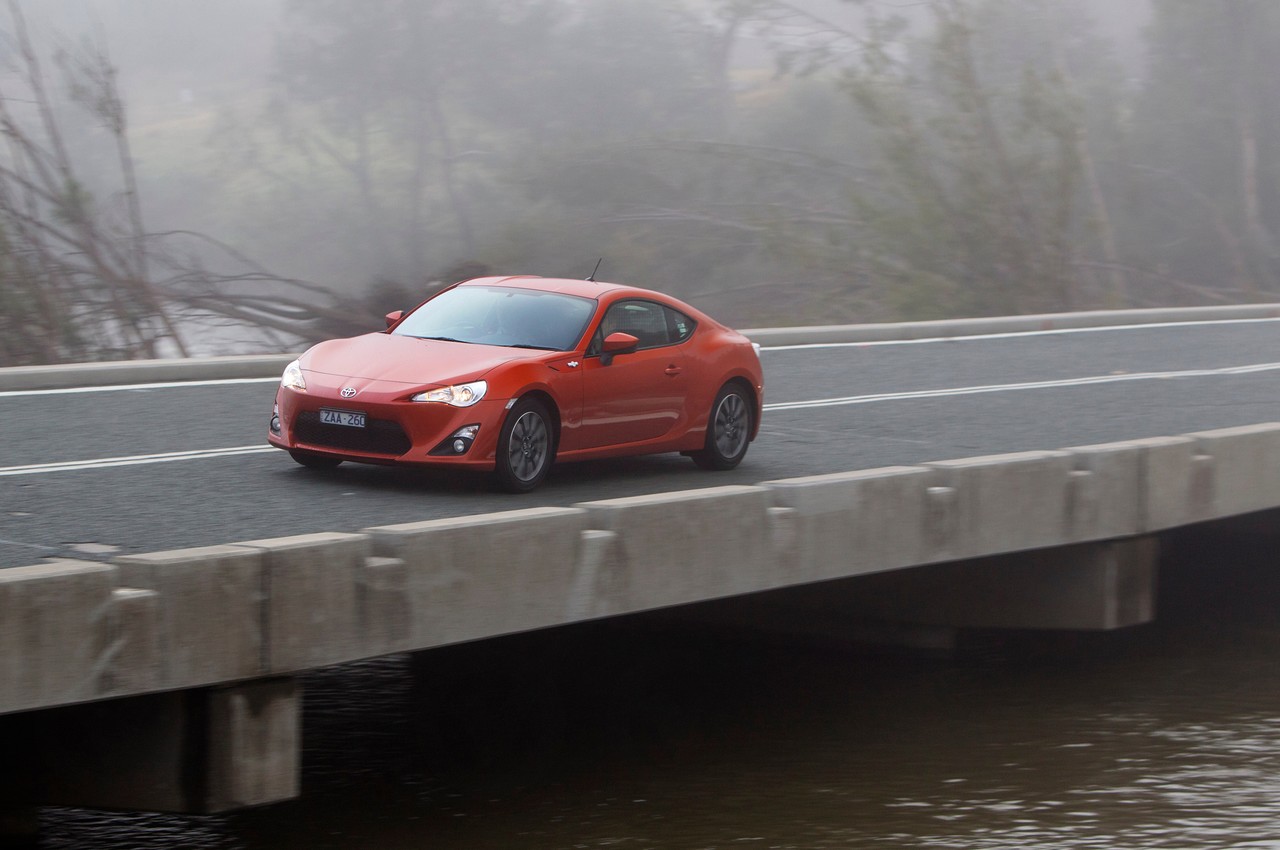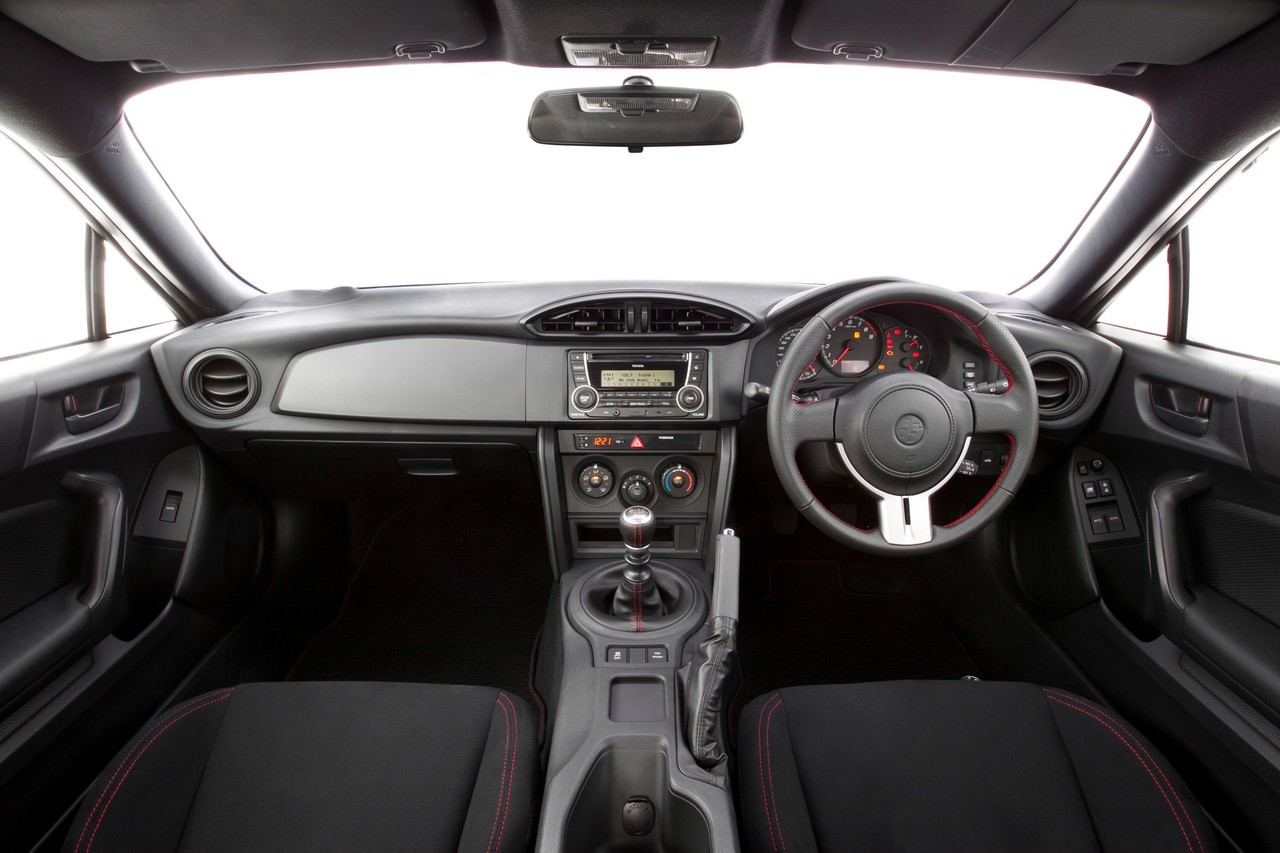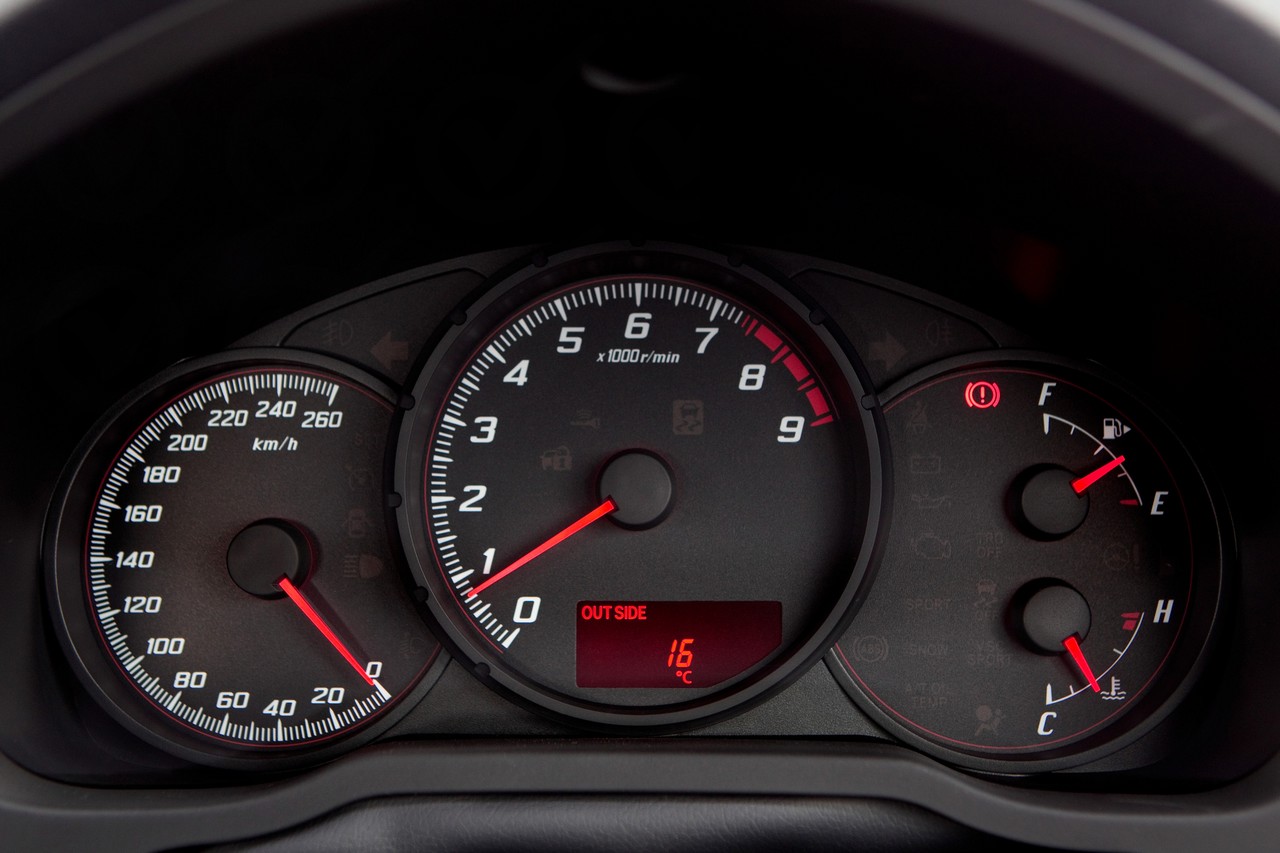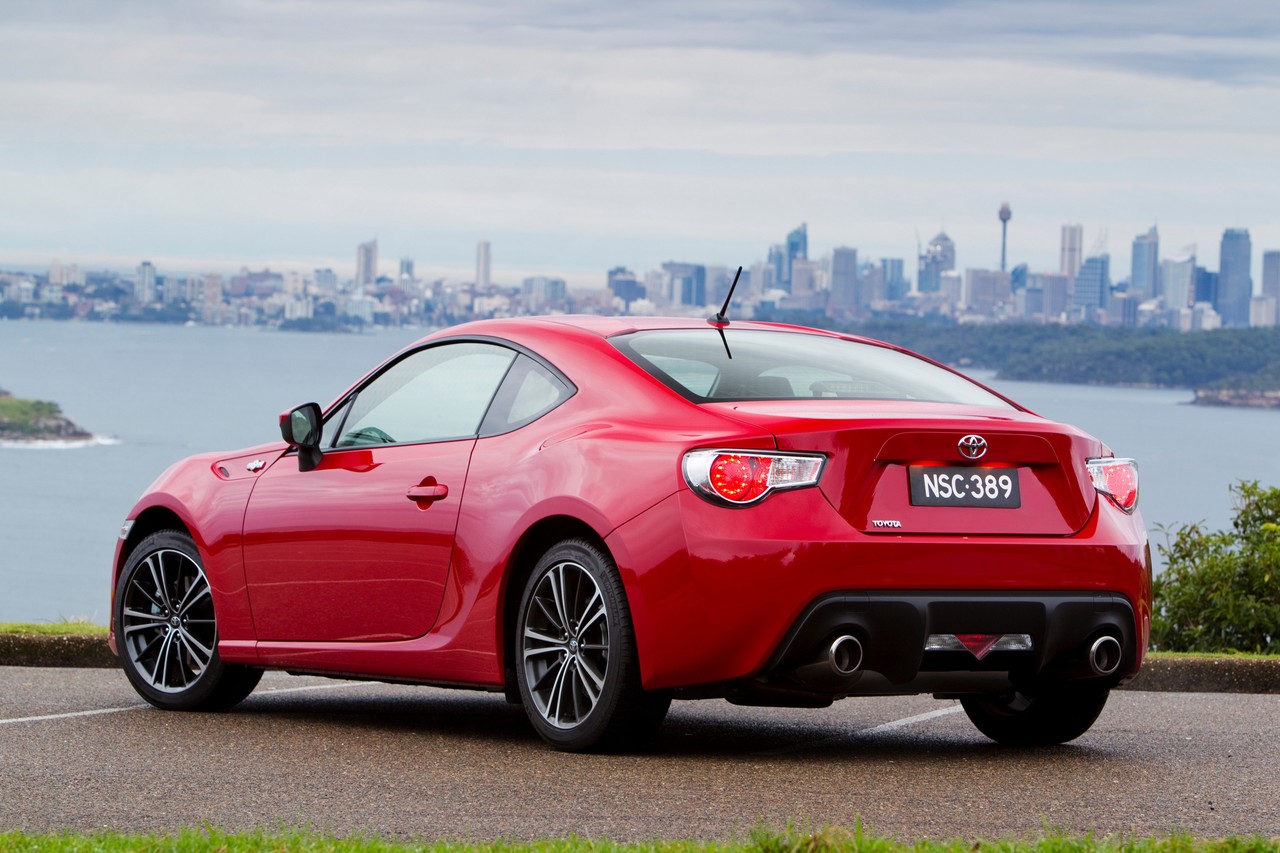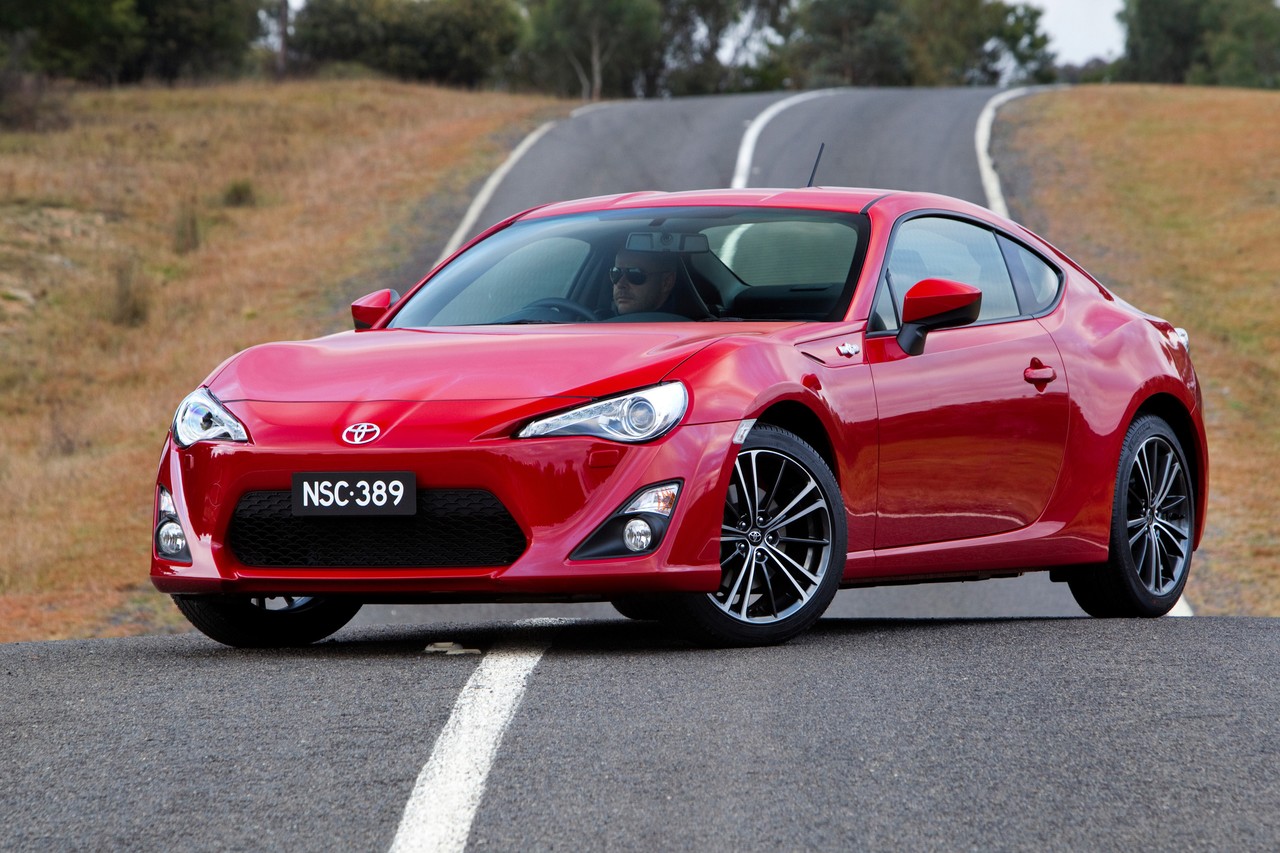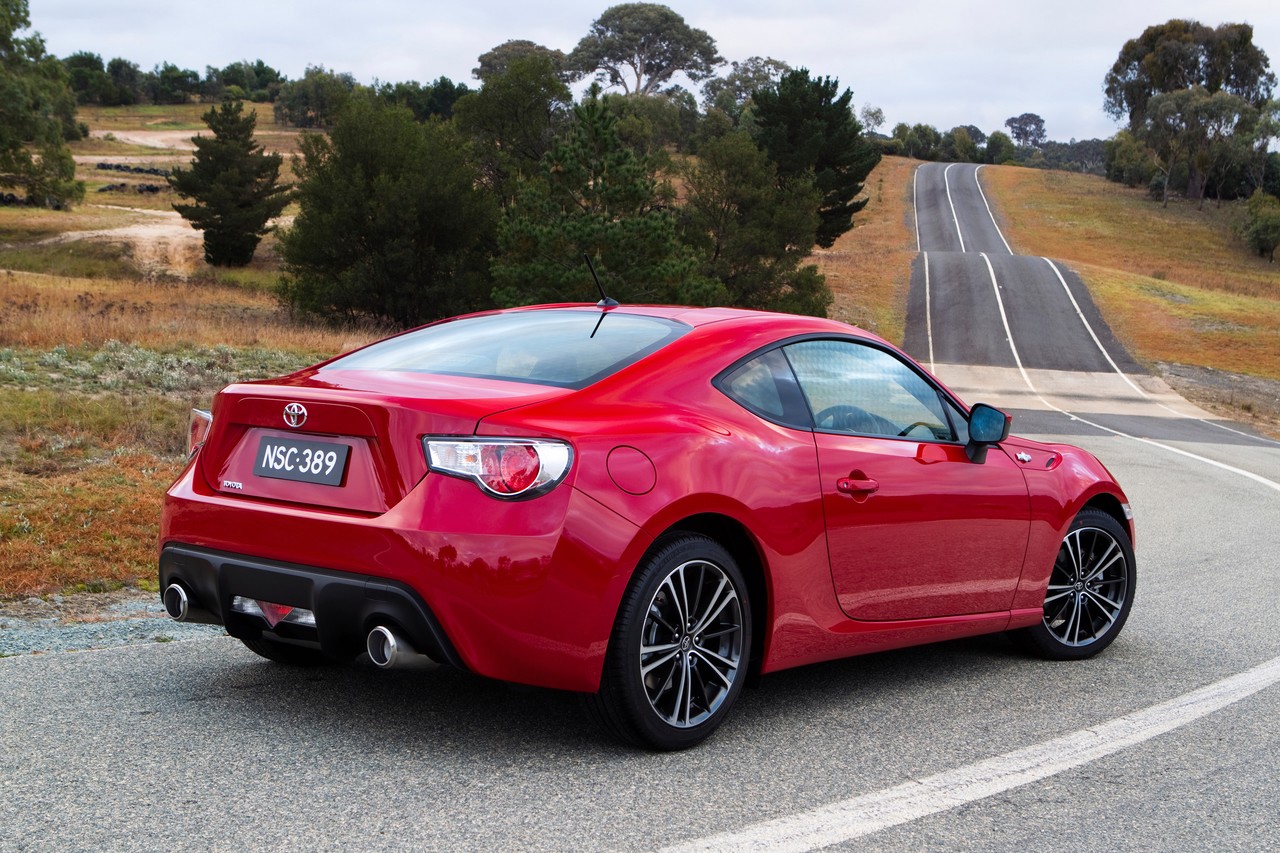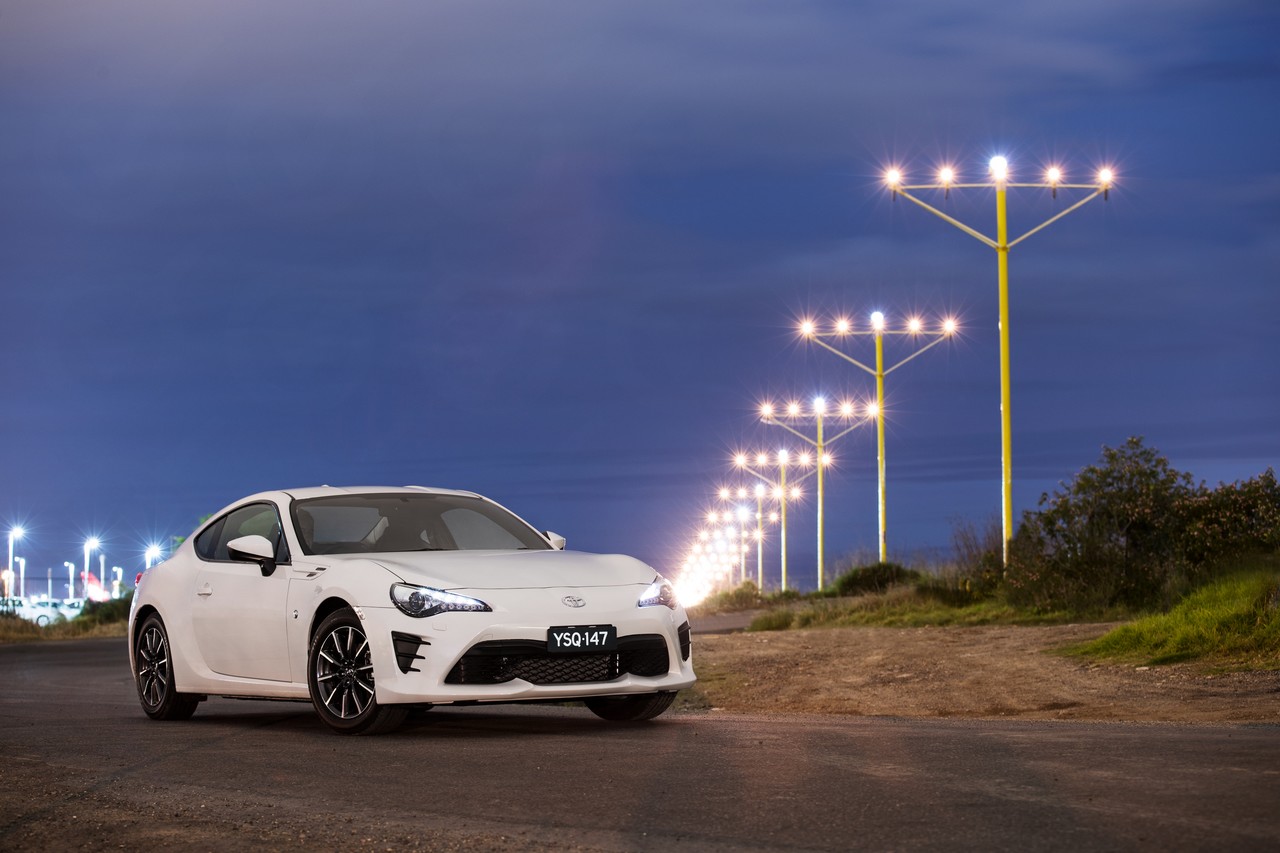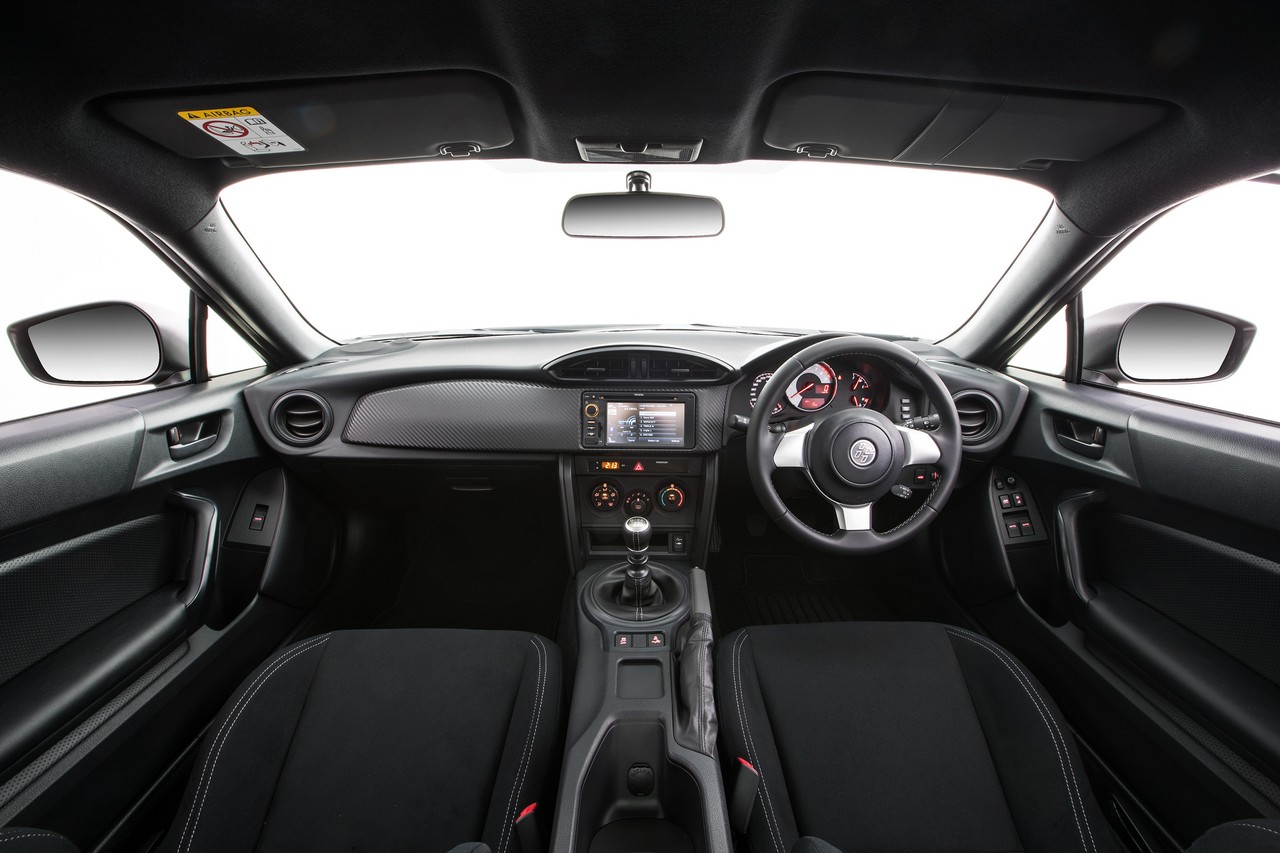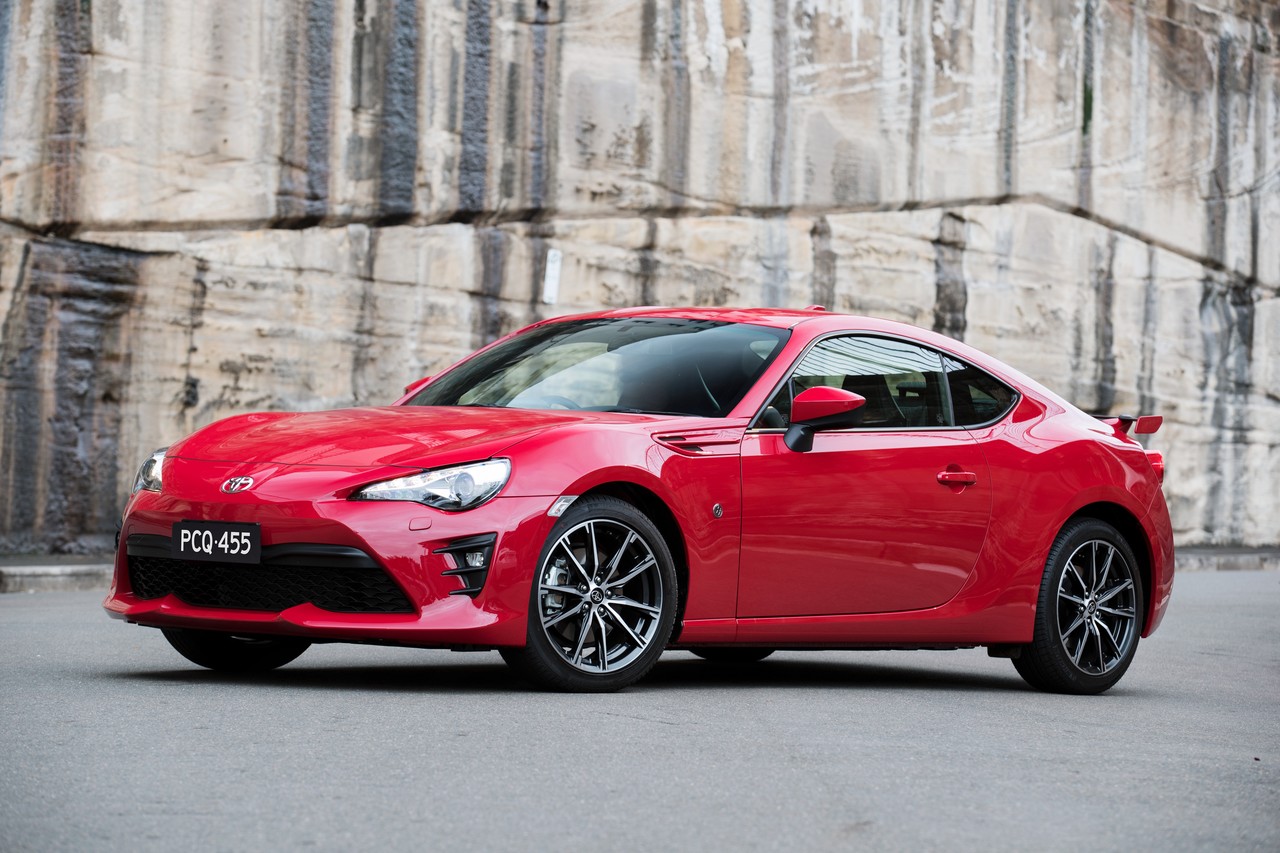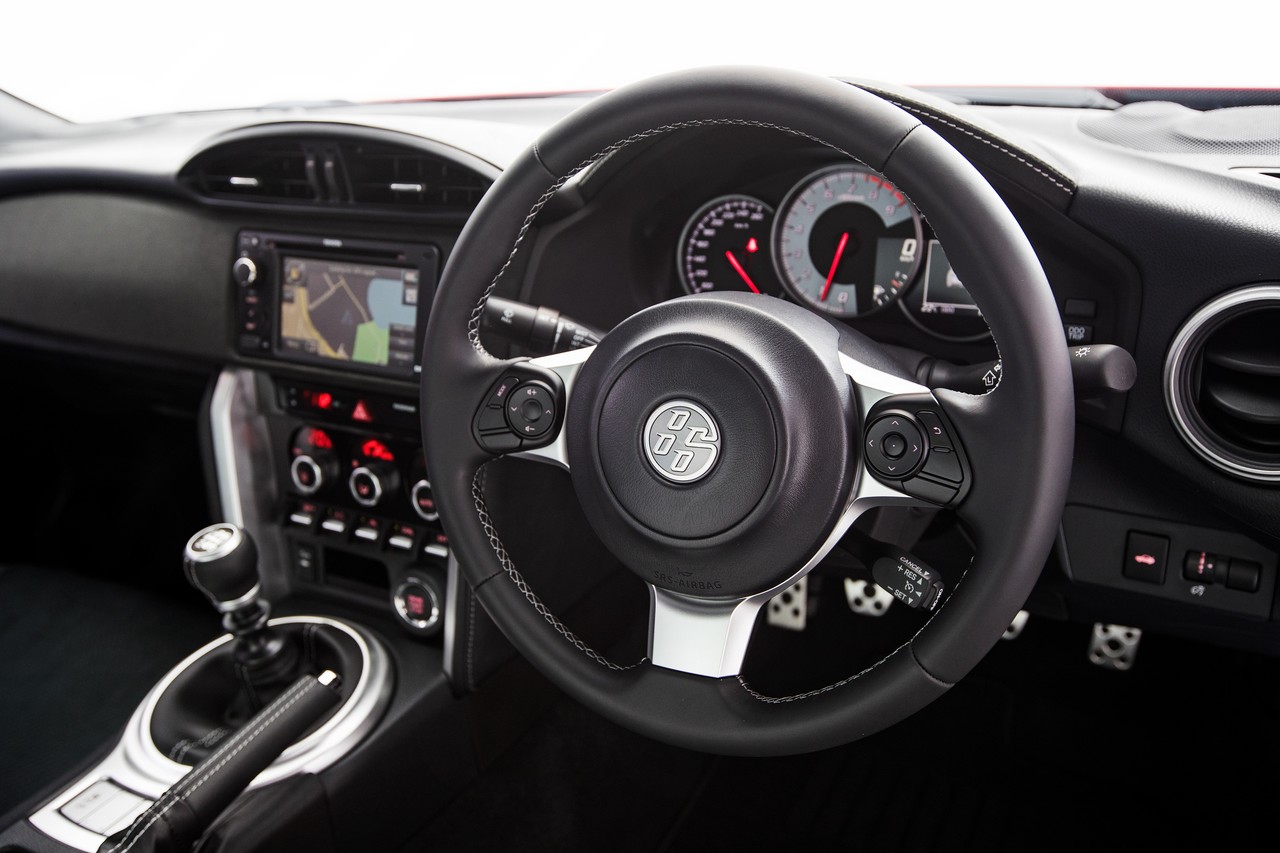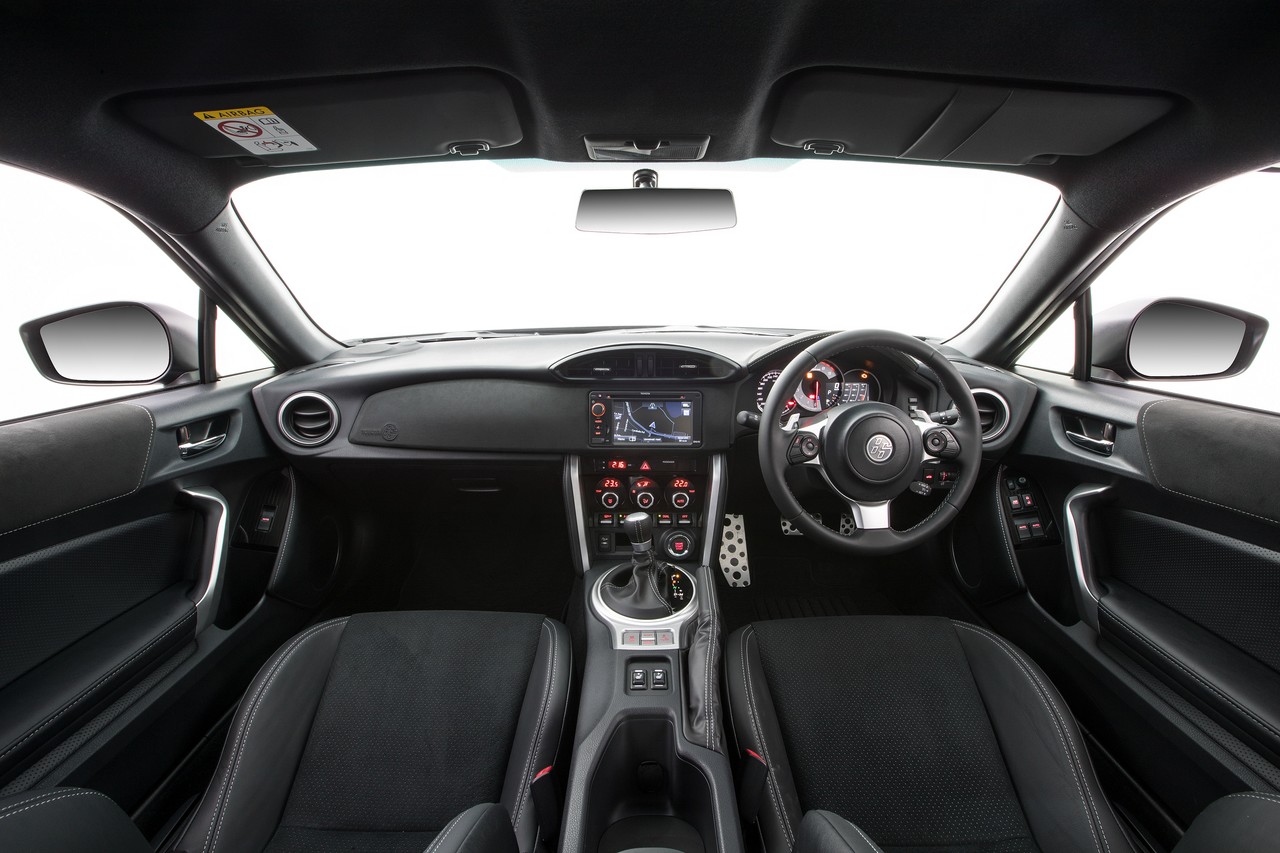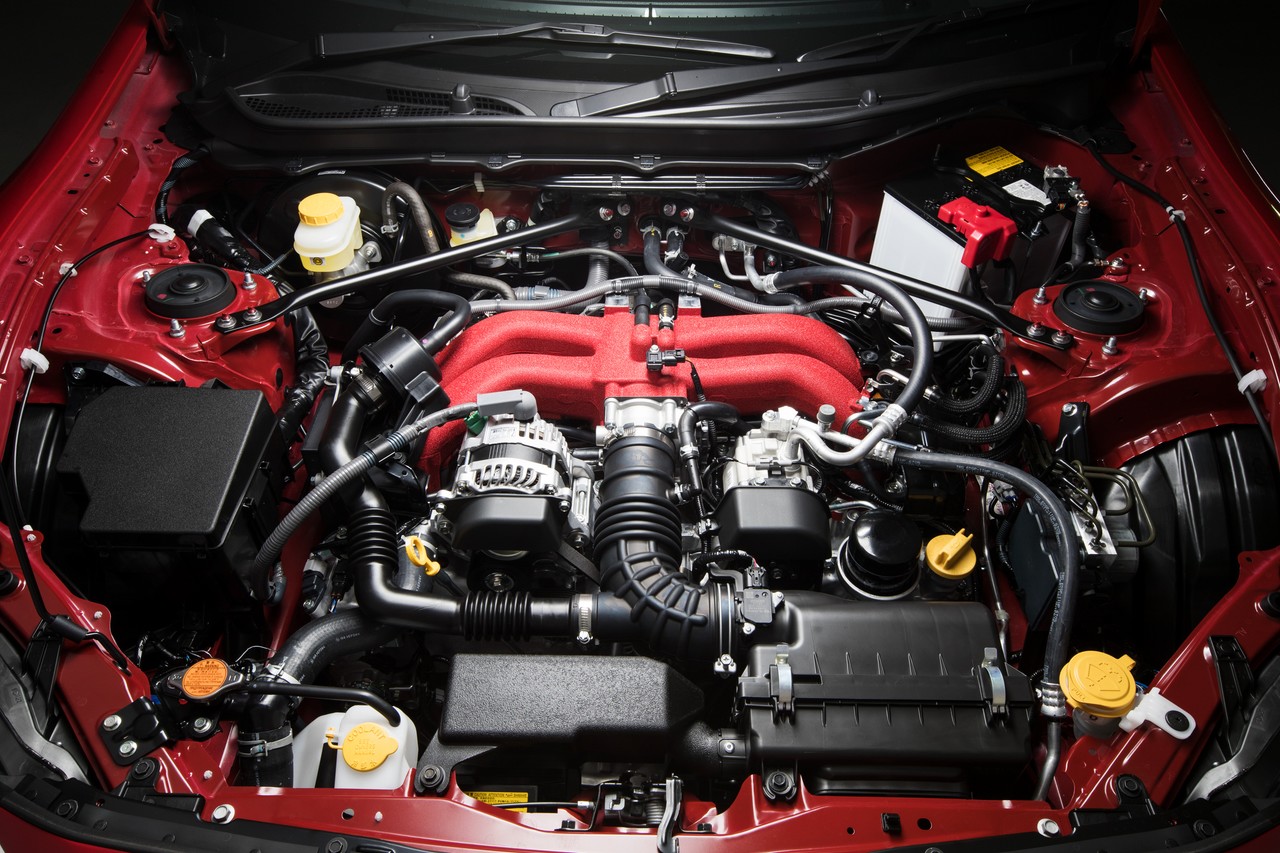
- Free-revving 2.0-litre FA20 engine
- Excellent ride/handling balance
- Agile, engaging handling
- Accurate steering provides great feel
- Responsive brakes
- Affordable reatil price and strong resale values
- Standard tyres lack wet-weather grip
- Less compliant ride for 86 GTS on 17-inch alloy wheels
- Engine requires 98 RON premium unleaded petrol
- Some cheap interior elements
- Thin paint finish
- Reports of uneven idle and stalling
Review: Toyota ZN6.I 86 (2012-16)
Overview
Released in June 2012, the Toyota ZN6 Series I (ZN6.I) 86 (pronounced ‘eight-six’) was a two door coupe with two-plus-two seating. Jointly developed with Subaru and closely related to the Subaru BRZ , the rear-wheel drive Toyota 86 was powered by a 2.0-litre horizontally-opposed (or boxer) engine which that was mated to either a six-speed automatic or manual transmission. The 86 was manufactured at Subaru’s factory in Gunma, Japan.
FA20 (4U-GSE) engine
The 2.0-litre FA20/4U-GSE petrol engine had an alloy cylinder block and head, double overhead camshafts, four valves per cylinder, variable valve timing and a compression ratio of 12.5:1. The engine also featured a dual injection system whereby both high-pressure direct-injection and lower-pressure indirect injection would be used at lower engine revolutions for reduced emissions. In high-load situations, however, only direct fuel injection was used.
| Variants | Engine | Trans. | Peak power | Peak torque | |
|---|---|---|---|---|---|
| 86 | GT, GTS |
2.0-litre petrol F4 (FA20) | 6sp man., 6sp auto |
147 kW at 7000 rpm | 205 Nm at 6400-6600 rpm |
Transmissions
The Toyota 86 was available with six-speed manual and automatic Aisin transmissions. The manual transmission had a short-throw shift lever and triple-cone synchromesh on the first three gears.
The automatic transmission, however, had a wet torque converter, steering wheel gearshift paddles for sequential shifting, downshift throttle blipping and three selectable modes: Sport, Snow and Normal. In Sport mode, torque-converter lock-up was enabled from lower speeds for greater acceleration; it also provided more responsive gears changes. In Snow mode, the throttle-valve opening was adjusted to control acceleration characteristics on low-grip surfaces.
Dimensions, steering and suspension
The Toyota 86 was 4240 mm long, 1775 mm wide, 1285 mm tall and had a 2570 mm long wheelbase. Furthermore, the 86 had electric power-assisted steering, MacPherson strut front suspension with reverse-positioned L-shaped lower-arms (that enabled the engine to be mounted lower and closer to the centre of the vehicle) and double wishbone rear suspension.
Safety equipment
Standard safety equipment for the Toyota 86 included dual front airbags, a driver’s knee airbag, front side airbag, full-length curtain airbags, ABS, electronic brake force distribution, brake assist, electronic stability control, traction control and front seatbelts with pretensioners and load limiters.
Brakes
The Toyota 86 GT had ventilated front and rear brake discs measuring 277 mm by 24 mm and 286 mm by 10 mm, respectively; the 86 GTS, however, had 294 mm by 24 mm front and 290 mm by 18 mm rear discs.
ANCAP crash testing
In ANCAP crash testing , the Subaru BRZ and Toyota 86 received five star adult occupant protection ratings with scores of 34.4 out of 37. In the offset crash test, driver protection was generally good, though there was a slight risk of serious lower leg injury. Furthermore, there was a slight risk of serious chest injury in the side impact test.
Features: Toyota 86 GT and GTS
Standard features for the Toyota 86 GT included 16-inch alloy wheels with 205/55 R16 tyres, a six sound system with a CD player, MP3-compatibility, auxiliary inputs (3.5 mm/USB) and Bluetooth connectivity with voice recognition, air conditioning, cruise control, flat folding rear seats, remote central locking, power windows and mirrors (with retracting function), tilt and telescopic steering wheel adjustment, two 12 volt power outlets and an immobiliser.
Initially, models with manual transmissions and GTS variants were fitted with a Torsen limited-slip rear differential. From September 2013, however, the limited-slip differential was fitted as standard across the range.
Compared to the GT, the Toyota 86 GTS was further equipped with 17-inch alloy wheels with 215/45 R17 tyres, dual-zone climate control air conditioning, satellite navigation with live traffic updates and a 6.1-inch display, leather/alcantara seat trim, heated front seats, front fog lights, high intensity discharge (HID) headlights and a proximity key.
From September 2013, the Toyota 86 GTS was also fitted with a rear spoiler.
July 2014 update
In July 2014, the Toyota 86 was updated and the following changes were introduced:
- The suspension was revised – with new suspension mounts, re-tuned shock absorbers and low-friction oil, oil seals and guide bushings – for greater responsiveness, ride quality, reduced body roll and increased handling stability;
- The 86 GT was fitted with the same instrument cluster as the GTS (included a digital speed read-out and a rev indicator light)
- GT variants with automatic transmissions received a shift-position indicator;
- The 86 GTS was fitted with a reversing camera and a carbon-look motif for the instrument panel surround; and,
- A shark-fin antenna was fitted as standard across the range.
March 2015 update
In March 2015, the following changes were introduced:
- GT variants were fitted with a 6.1-inch touch screen that could display images from the reversing camera (previously introduced on GTS variants in July 2014) and provide control over the audio system, Bluetooth mobile phone connectivity and audio streaming;
- A full-size spare wheel could be ordered at no extra cost as an alternative to the tyre-repair kit; and,
- Prices were reduced
2015 Toyota 86 Blackline Edition
Released in November 2015, the Toyota 86 Blackline Edition was based on the 86 GTS but could be identified by its ‘white liquid’ paint finish, twin black stripes on the roof and bonnet, gloss-black 17-inch alloy wheels and TRD body kit which included a front spoiler, side skirts, three-piece rear spoiler and garnishes for the rear lower bumper and fenders. Inside, the Toyota 86 Blackline Edition featured red highlights for the seats, steering wheel, gearshift knob, handbrake lever and door grips.
Production of the Toyota 86 Blackline Edition was limited to 450 vehicles: 250 with manual transmissions and 200 with automatic transmissions
Brochure
Related links
- Specifiations: Toyota ZN6 86 (June 2012)
- Press Kit: Toyota ZN6 86 (June 2012)
- Press Release: Toyota ZN6 86 GTS – Aero Kit (June 2012)
- Press Release: Toyota ZN6 86 running changes (September 2013)
- Press Release: Toyota ZN6 86 update (July 2014)
Review: Toyota ZN6.II 86 (2016-21)
Overview
Released in Australia in November 2016, the Toyota ZN6 Series II (ZN6.II) 86 introduced updated styling, revised shock absorber and spring rates, and a stiffer chassis. For Toyota 86 models with manual transmissions,
- Outputs for the 4U-GSE engine increased by 4 kW and 9 Nm (to 151 kW and 214 Nm) due to its revised intake runners and increased diameter exhaust. Other changes included reinforcing ribs for the rear of the cylinder block and more durable pistons; and,
- The final drive gear ratio was changed to 4.3:1 (previously 4.1:1) for greater acceleration.
| Variants | Engine | Trans. | Peak power | Peak torque | |
|---|---|---|---|---|---|
| 86 | GT, GTS |
2.0-litre petrol F4 (FA20) | 6sp auto | 147 kW at 7000 rpm | 205 Nm at 6400-6600 rpm |
| 6sp man. | 152 kW at 7000 rpm | 212 Nm at 6400-6800 rpm |
Styling changes
Visually, the Toyota ZN6.II 86 could be identified by its larger centre air intake with new ‘teeth’ along the bottom edge of the lower grille, re-designed LED headlamps and indicators, new fog lamp bezels and a re-shaped front bumper. Furthermore, the ’86’ logo was shifted to a stand-alone badge on the front fender and inside the headlamps. Aero-stabilising fins were introduced for the side of the ZN6.II 86 and, at the rear, there were new LED tail-lamps and a deeper rear bumper. The ZN6.II 86 GTS was also fitted with newly designed 17-inch cast-alloy wheels.
Inside, the ZN6.II 86 was fitted with a 362 mm diameter steering wheel, the smallest ever used in a Toyota; the tachometer was also modified so that 7000 rpm was at the top of the meter.
Chassis changes
According to Toyota, the ZN6.II 86 had a stiffer chassis, particularly the rear end where additional spot welds were implemented and ‘key components’ were made thicker. Furthermore, the coil springs and shock absorbers were retuned for improved handling, stability, ride comfort and tuning performance; a thicker rear stabiliser bar was also introduced.
Features
For the Toyota ZN6.II 86, standard features were extended to include daytime running lamps and Hill Start Assist Control (HAC), which sought to prevent the car from rolling backwards on steep hills prior to accelerating from rest. A selectable ‘track’ mode was also introduced for the electronic stability and traction control systems which enabled the driver to adjust the level of intervention, including a ‘fully off’ option.
The Toyota ZN6.II 86 GTS gained a new 4.2-inch colour multi-information display which included performance data information such as power and torque curves, a stopwatch and G-force monitor. Other changes included integrated audio controls for the steering wheel and a suede-like ‘Grandlux’ material for the instrument panel and door trims.
In December 2017, standard features for the Toyota 86 were extended to include satellite navigation (previously omitted from the 86 GT), and the updated multimedia system included ‘Toyota Link’ connected mobility (which could provide access to Pandora internet radio, find destinations, weather information and other assistance).
2017 Toyota 86 Solar Orange Limited Edition
Released in June 2017, the Toyota 86 Solar Orange Limited Edition was based on the 86 GTS and solely available with a manual transmission. Compared to the 86 GTS, the 86 Solar Orange Limited Edition could be identified by its Solar Orange paint finish, 17-inch ten-spoke anthracite-coloured alloy wheels and metallic black finishes for the rear spoiler and door mirror housings. The 86 Solar Orange Limited Edition was also fitted with:
- 326 mm by 30 mm ventilated front brake discs with four-piston Brembo callipers (and 75 cm2brake pads) and 316 mm by 20 mm ventilated rear discs with two-piston Brembo callipers; and,
- Specially-tuned Sachs performance dampers
Inside, the 86 Solar Orange Limited Edition featured contrast orange stitching for the front seats, steering wheel, gear shift, park brake and door trim. Australian deliveries of the Toyota 86 Solar Orange Limited Edition were limited to sixty (60) vehicles.
Toyota 86 Performance Kit (December 2017)
From December 2017, the Toyota 86 GT and GTS variants could be specified with an optional performance kit which consisted of:
- Anthracite-coloured ten-spoke 17-inch alloy wheels;
- 326 mm by 30 mm ventilated front brake discs with four-piston Brembo callipers (and 75 cm2brake pads) and 316 mm by 20 mm ventilated rear discs with two-piston Brembo callipers; and,
- Specially-tuned Sachs dampers ‘to boost handling stability and responsiveness’.
The performance kit had a recommended retail price of $2200 for the 86 GTS and $2900 for the 86 GT.
Toyota 86 GTS vehicles specified with the performance kit and the newly introduced ‘Moon Slate’ paint finish also featured red interior trim highlights and a black finish for the wheels, door mirror caps and rear spoiler.
Brochure
Related links
- Toyota Australia: Updated Toyota 86 Unveiled (March 2016)
- Toyota Australia: More Driver Focused Than Ever (November 2016)
- Toyota Australia: Toyota 86 – Performance Kit and Toyota Link (December 2017):
- Toyota Australia: Toyota 86
- Wikipedia.org: Toyota ZN6 86
